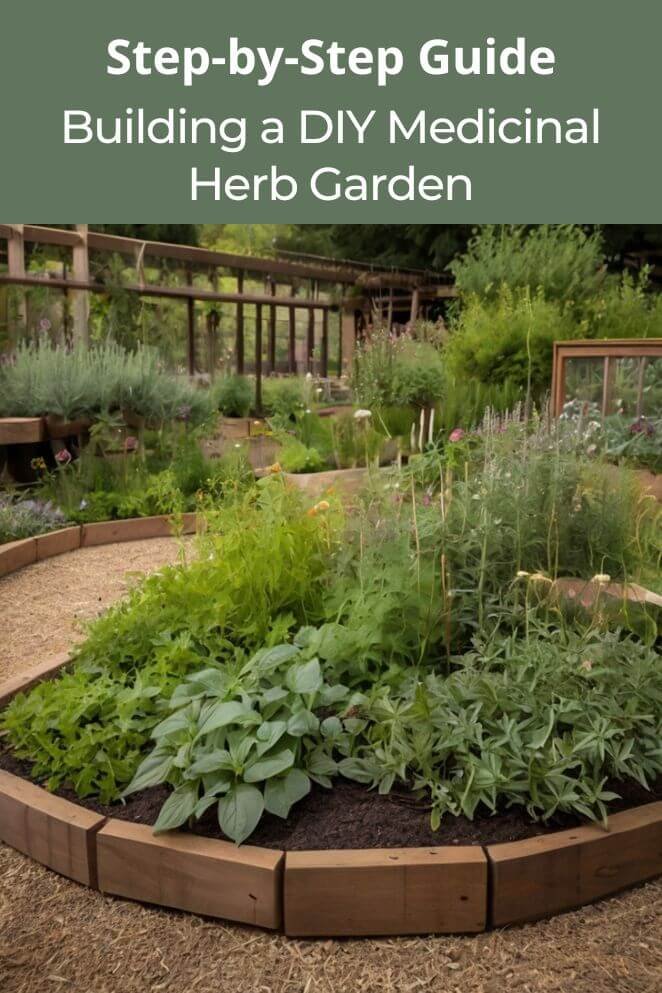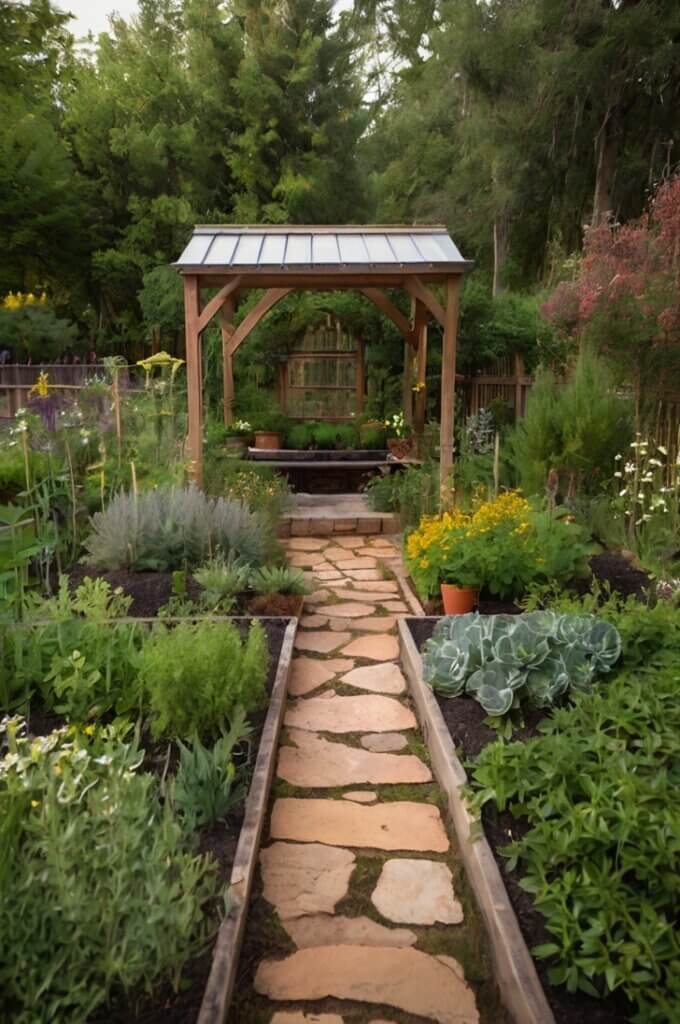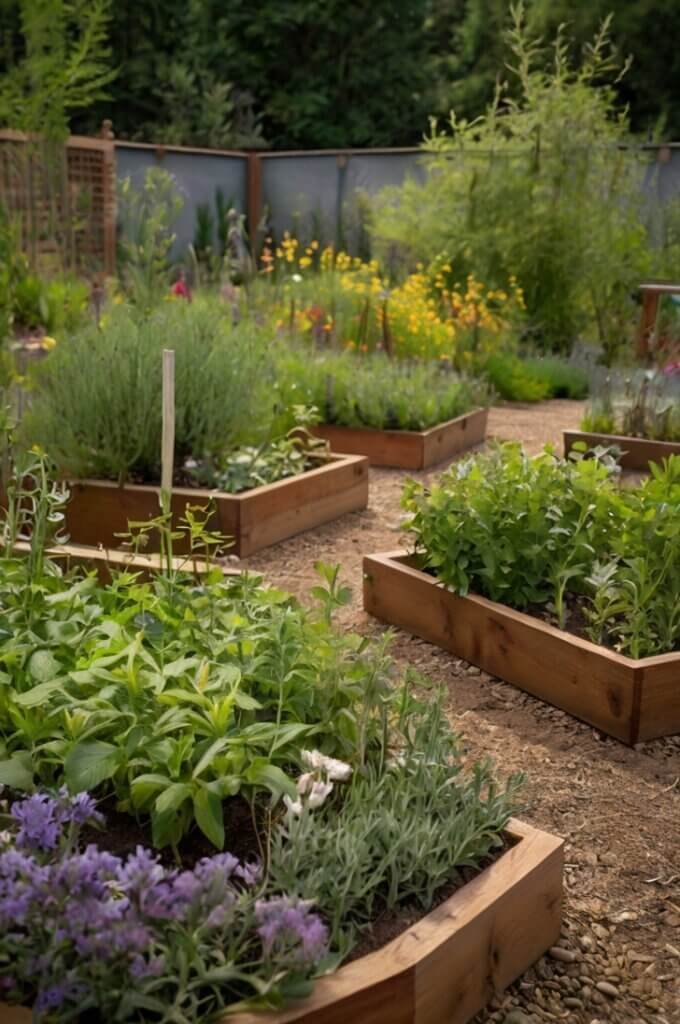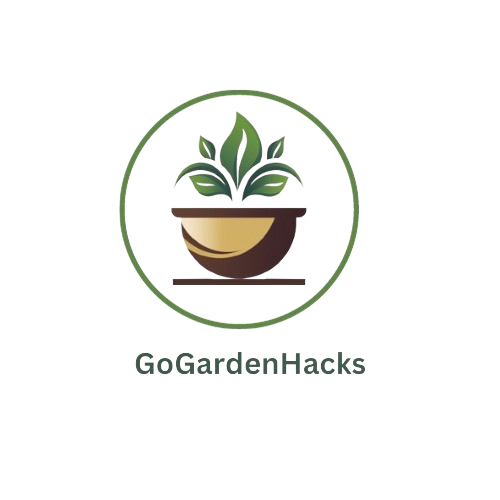
Growing your own medicinal herb garden is a rewarding and practical way to take control of your health.
Whether you want to make teas, tinctures, or salves, having fresh herbs at your fingertips allows you to create natural remedies right from your backyard.
Plus, it’s cost-effective, ensures quality, and offers a therapeutic gardening experience.
In this guide, we’ll walk you through everything you need to know about planning, planting, and maintaining a DIY medicinal herb garden.
Why Grow a Medicinal Herb Garden?
Growing your own medicinal herb garden is more than just a hobby—it’s a practical, rewarding way to improve your health and well-being.
Here’s why it’s worth starting:
Easy access to fresh herbs
When you grow your own herbs, you can pick them fresh whenever you need them.
Fresh herbs are often more potent and effective than store-bought dried ones, ensuring your remedies are as powerful as possible.
Plus, there’s nothing quite like the satisfaction of stepping outside to harvest what you’ve grown yourself.
- You might also like: No Yard Needed! DIY Herb Garden for Small Apartment
- You might also like: Herb Heaven Indoors: DIY Indoor Herb Garden With Grow Lights
Cost-effective
Buying medicinal herbs, whether fresh or dried, can add up quickly.
Growing your own is a budget-friendly alternative.
With just a little effort, you can produce a steady supply of herbs at a fraction of the cost, saving money while still having plenty to use or share.
Control over quality and purity
When you grow your herbs, you know exactly how they’ve been cared for.
You can avoid harmful pesticides, chemicals, and additives, ensuring your herbs are pure and natural.
This peace of mind is hard to beat, especially when it comes to your health.
Therapeutic and relaxing
Gardening isn’t just good for your body—it’s good for your mind, too.
Spending time tending to your plants can be incredibly calming and meditative.
It’s a chance to slow down, connect with nature, and reduce stress.
Many gardeners find that working with plants brings a sense of peace and fulfillment.
Educational
Growing medicinal herbs is a great way to learn about the healing properties of plants.
As you care for your garden, you’ll discover how different herbs can support your health, from soothing chamomile to immune-boosting echinacea.
This knowledge is not only fascinating but also empowering, giving you the tools to take charge of your well-being.

Planning Your Garden
Choosing a location
Picking the right spot for your herb garden is key to its success.
Here’s what to consider when deciding where to plant:
Sunlight
Most medicinal herbs thrive with plenty of sunlight.
Look for a location that gets at least 6 hours of direct sun each day.
A sunny windowsill, balcony, or backyard patch can work perfectly.
If you’re in a hot climate, some afternoon shade can help protect your plants from scorching.
Soil type
Herbs prefer well-drained, slightly sandy soil.
If your soil is heavy or clay-like, mix in some compost or sand to improve its texture.
Good soil helps roots grow strong and prevents water from pooling around them.
Drainage
Herbs don’t like soggy roots, so make sure your garden has proper drainage.
If you’re planting in the ground, avoid low spots where water collects.
For containers, choose pots with drainage holes to let excess water escape.
Accessibility
Place your garden somewhere convenient, like near your kitchen or a frequently used outdoor space.
This makes it easy to harvest herbs whenever you need them, whether it’s for a cup of tea or a homemade remedy.
Container vs. in-ground gardening
If space is limited, don’t worry—herbs grow beautifully in containers!
Pots, window boxes, or even hanging baskets can work well.
Container gardening also gives you the flexibility to move plants around to catch the best light or protect them from harsh weather.
Selecting your herbs
Starting a medicinal herb garden?
Here are some easy-to-grow herbs that are perfect for beginners, along with their amazing benefits:
- Lavender: Known for its calming scent, lavender helps you relax and can improve sleep quality. It’s a must-have for anyone looking to unwind.
- Mint: Refreshing and versatile, mint aids digestion and can even help relieve headaches. Plus, it’s great for teas, cooking, and more.
- Chamomile: This gentle herb is a natural stress reliever and sleep aid. A cup of chamomile tea is like a warm hug at the end of a long day.
- Rosemary: Not just for cooking, rosemary can boost memory and help ease muscle pain. Its pine-like aroma is an added bonus!
- Aloe vera: A go-to for skin care, aloe vera soothes burns, cuts, and irritations. It’s like having a first-aid kit in your garden.
- Thyme: This flavorful herb supports respiratory health and strengthens your immune system. It’s a powerhouse in both the kitchen and your medicine cabinet.

Garden design
Designing your herb garden is where the fun begins!
A well-thought-out layout not only looks great but also helps your herbs thrive.
Here’s how to create a garden that’s both beautiful and functional:
Simple layouts
You don’t need a complicated design to grow a successful herb garden.
Here are a few easy options:
- Rows: Perfect for in-ground gardens, rows make it easy to organize and access your herbs.
- Circles: Create a circular or spiral garden for a visually appealing and space-efficient design.
- Container groupings: If you’re short on space, group pots together on a patio, balcony, or windowsill.
Space considerations
Give your herbs room to grow!
Overcrowding can lead to poor air circulation and competition for nutrients.
Check the spacing requirements for each herb and plan accordingly.
For example, rosemary and lavender need more space, while thyme and oregano can grow closer together.
Companion planting
Some herbs grow better together, while others prefer their own space.
Here’s what to keep in mind:
- Basil and chamomile: These herbs thrive when planted near each other. Basil can even enhance the flavor of nearby plants.
- Mint: Mint is a bit of a garden bully—it spreads quickly and can take over. To avoid this, plant mint in its own container or a separate area.
Planting and Care
Growing a thriving herb garden is all about giving your plants the right start and ongoing care.
Here’s a step-by-step guide to help you along the way:
Soil preparation
- Enrich the soil – Add compost or organic matter to improve soil quality. This gives your herbs the nutrients they need to grow strong.
- Check soil pH – Most herbs prefer slightly acidic to neutral soil, with a pH between 6.0 and 7.0. Use a soil test kit to make sure your soil is in the right range.
- Ensure good drainage – Herbs don’t like soggy roots. If your soil doesn’t drain well, mix in sand or plant in raised beds or containers.
Planting
- Seeds vs. seedlings: Starting from seeds is cost-effective but takes more time. Seedlings give you a head start and are great for beginners.
- Spacing and depth: Follow the planting instructions for each herb. Proper spacing prevents overcrowding, and planting at the right depth ensures healthy root growth.
- Watering tips: Herbs like moderate watering. Let the soil dry out slightly between waterings to avoid overwatering, which can lead to root rot.
Ongoing care
- Regular watering and weeding: Keep your garden tidy and hydrated. Weeds compete for nutrients, so pull them out regularly.
- Fertilizing: Some herbs, like basil and mint, benefit from occasional feeding with organic fertilizer. Others, like rosemary and thyme, need very little.
- Pest control: Use natural methods like neem oil or companion planting to keep pests at bay. For example, planting marigolds nearby can deter harmful insects.
Harvesting tips
- Timing matters: Harvest leaves in the morning when their essential oils are most concentrated. This ensures the best flavor and potency.
- Prune regularly: Trim your herbs often to encourage bushier growth and prevent them from becoming leggy.

- You might also like: Easy Elegance: DIY Herb Garden With Mason Jars
- You might also like: Balcony Heaven: DIY Vertical Herb Garden For Balcony
Final Thoughts
Starting a medicinal herb garden is a simple, fulfilling way to bring natural remedies into your daily life.
With a little care and attention, you can grow fresh herbs that are ready to use whenever you need them.
Not only does this support a healthier lifestyle, but it also connects you to nature and promotes sustainability.
Whether you’re a seasoned gardener or just starting out, a medicinal herb garden is a small step with big benefits!



